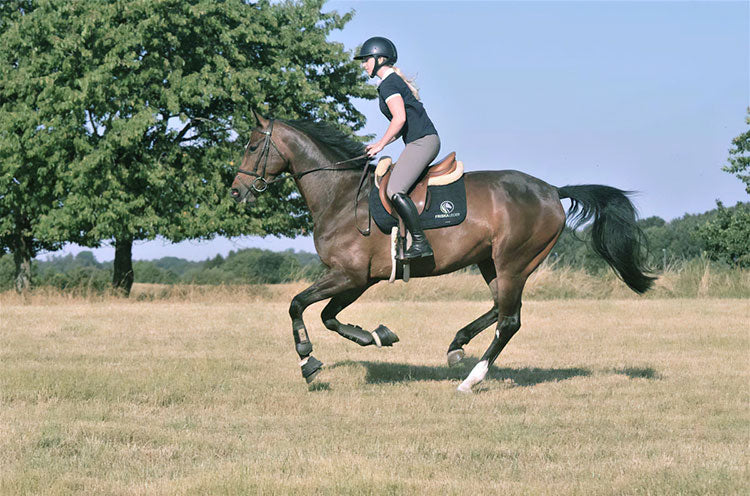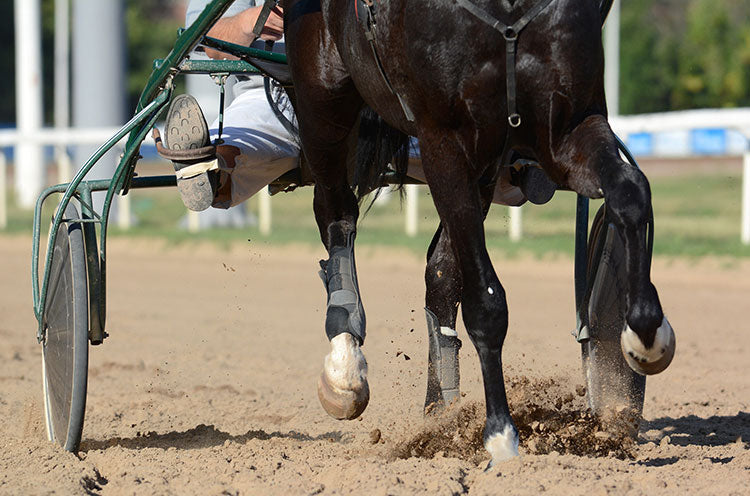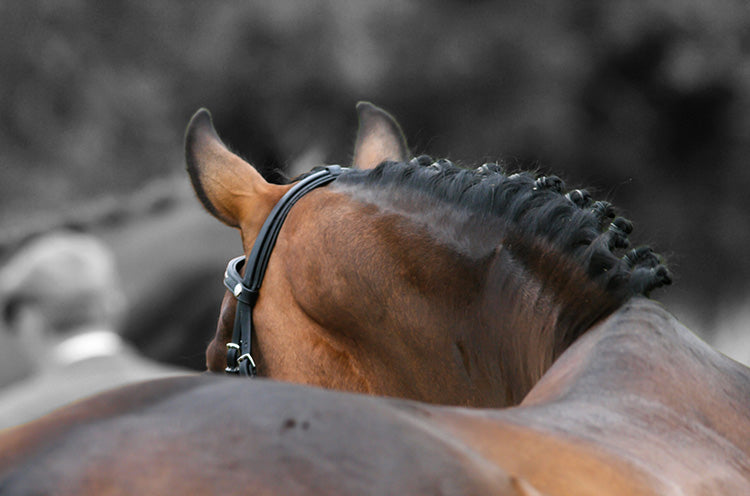Riding a lot and training a little is an expression veterinarian Eva Skiöldebrand advises all riders. The horse is made to be in motion and therefore does not feel good standing still. Many times, horse owners give their horses a rest in good faith, but in smaller paddocks, the horses mostly stand still. Hence, it is better for the horse in these cases to move but with less intensity. Examples of this could be:
- Outdoor ride
- Lunging
- Step machine
- Walk
- Easy work
- Loose gallop
It is only the imagination that sets the limits. In the same way that the horse's body is created for movement, the horse's joints are basically not created for the work we require. Jumping high hurdles, doing pirouettes and trotting with a cart behind you are loads that strain the joints. This does not mean that we cannot do these exercises with our horses, we just have to be aware of how to do it in the best way.
One way to balance training is through breaks in the riding session. Assemble and collect the horse for a while and then release the tension and let the horse pause. Then you can return to gathering again before the next break comes. Breaks for the joints can look like pure walking breaks for a few minutes or simply through freer work without gathering. It takes a few minutes for the joints to regain full circulation and recovery. In order to get fluency in your riding session, it is best that you plan what the session should look like. What do I want to do today? What should I achieve? When should I demand a collection and when should I put in my micropaus? A lot is then about the feeling during the riding session, but with a basic plan and structure this will happen naturally.

When should I ride without training?
A few sessions a week and during rest periods. Varied riding and training are A & O for a long-term sustainable horse. It is important for both the physical and mental health of the horse that it gets variety in its everyday life. We are often ambitious and want to work our horses a lot. However, this does not benefit the joints or the horse's mental health. For happy joints and psyche, we recommend variety and balance.
You can also train low-intensity, for example work on certain movements in walking such as leg bend and open. You can do the canter change in the forest and do loosening work.
What is active rest?
After, for example, intensive competition periods, we like to give the horses a rest. However, if you ask most veterinarians and equine therapists, they will recommend rest and movement. The horses can of course have days when they only walk in the pasture and do nothing else. The optimal thing is if the horse can have a long time outside in the paddock AND perform some activity such as outdoor riding or lunging.
Active rest = Rest with activities without straining the body.
My horse is very energetic, how should I introduce active rest or reduced effort?r
Riding twice a day can feel like higher effort, but through low-intensity work, it's more about stimulating the horse. For example, you can lunge the horse in the morning and then ride a session in the afternoon. Since the horse has gotten out of some of the excess energy in the morning, the session can be shorter and more efficient. Replace lunging with a lighter round in the forest, loose gallop in the stables or a walk. You can also trim in the morning and then do something light in the afternoon to get a more harmonious horse in the box and paddock. This suits horses with a lot of energy, who do not have access to long outdoor stays or have small paddocks where they do not naturally move. Don't be afraid to ride your horse, we only want to help you find a balance for a long-term sustainable horse.




Leave a comment
This site is protected by hCaptcha and the hCaptcha Privacy Policy and Terms of Service apply.